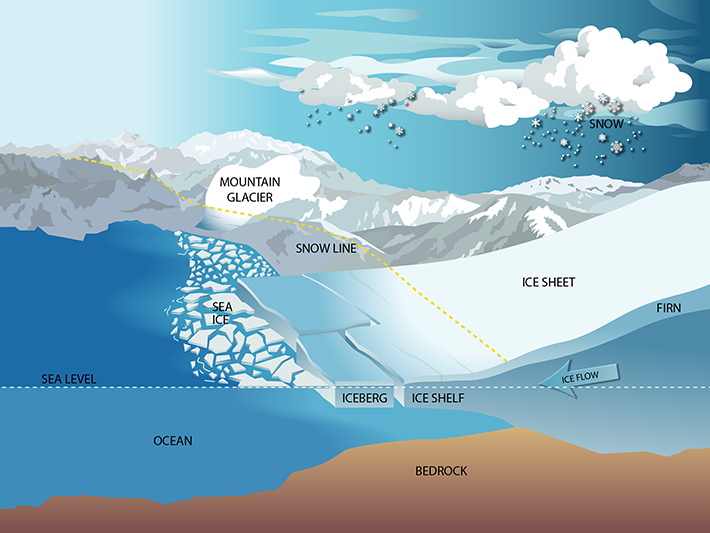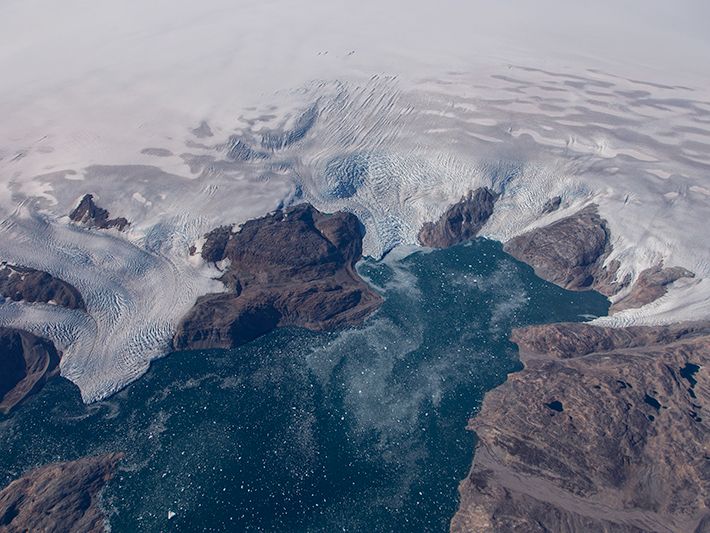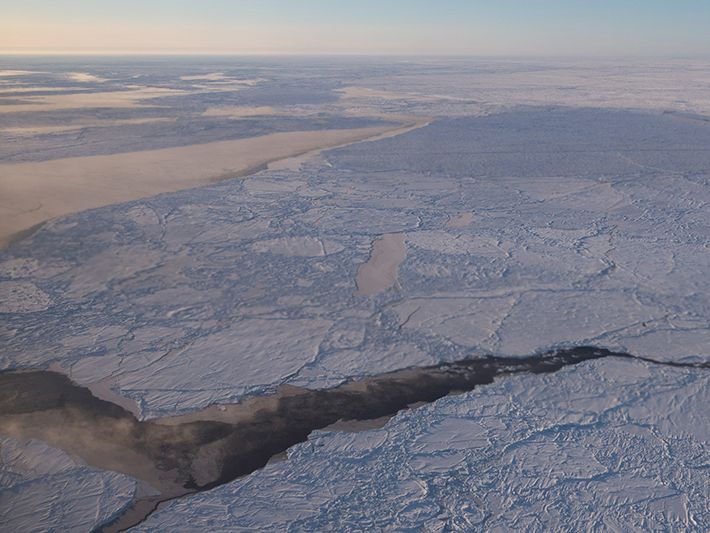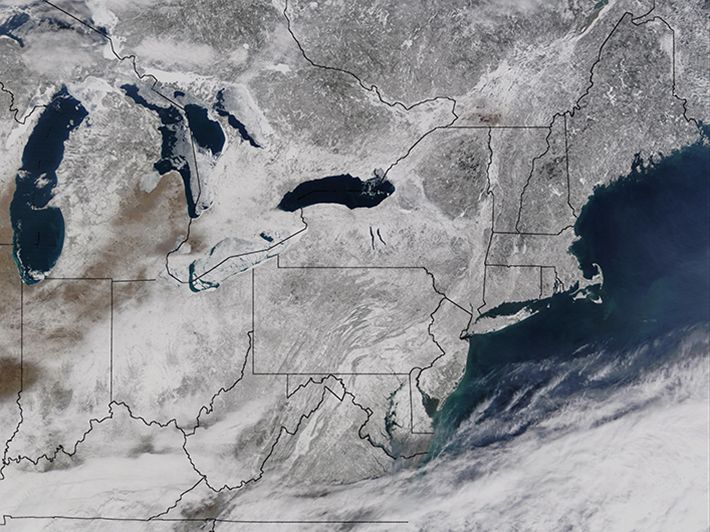Research Areas

Ice Basics
Ice exists in the natural environment in many forms. The figure illustrates most of the Earth's ice features. At high elevations and/or high latitudes, snow that falls to the ground can gradually build up to form thick consolidated ice masses called glaciers.

Ice Sheets & Glaciers
The effects of past and present climate changes on ice sheets are manifest in their current state of mass balance. Assessing that balance has been and continues to be a research priority. Scientists have a long history of studying global ice sheet, glacier, and ice shelf dynamics, Antarctic and Greenland ice sheet evolution and mass balance and the resultant impact on global sea level.

Sea Ice
Sea ice is major area of cryospheric research and an important component of the strongly coupled polar ocean-ice-air system--a major focus of the U.S. Climate Change Science Program. The sea ice group produced, analyzed, and continues to maintain the longest calibrated, sea ice record (over 30 years, extending from ESMR in 1972, through SMMR, to SSM/I, and now to AMSR) from multiple passive microwave satellite sensors.

Snow
Cryospheric Sciences in conjunction with Hydrological Sciences has a strong snow research activity that addresses the extent, water equivalent, depth and albedo of the world's snow cover. We have long been leaders in developing algorithms that provide estimates of Snow Water Equivalent (SWE) from passive microwave observations and MODIS data.
